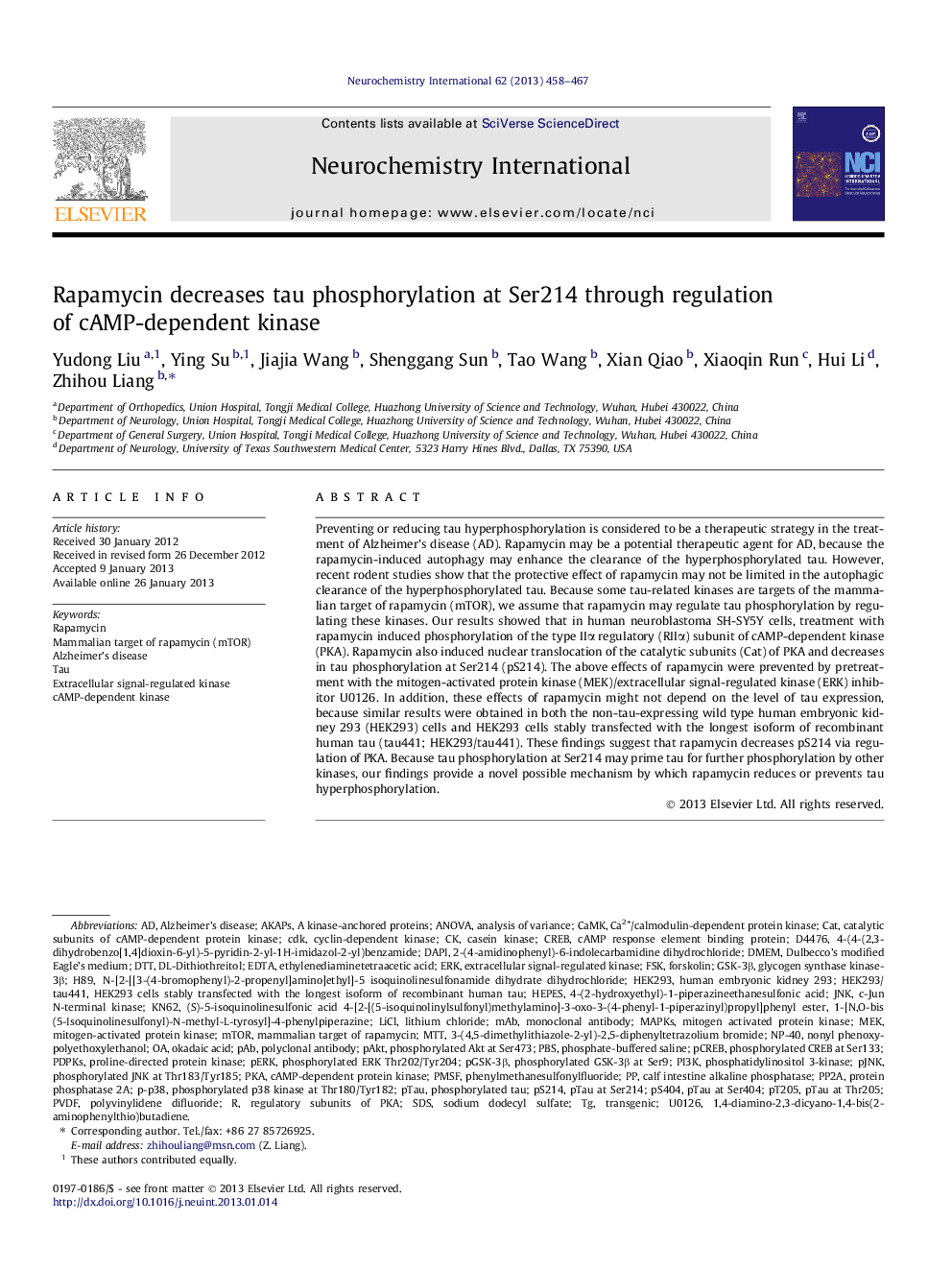| کد مقاله | کد نشریه | سال انتشار | مقاله انگلیسی | نسخه تمام متن |
|---|---|---|---|---|
| 2200687 | 1099960 | 2013 | 10 صفحه PDF | دانلود رایگان |

Preventing or reducing tau hyperphosphorylation is considered to be a therapeutic strategy in the treatment of Alzheimer’s disease (AD). Rapamycin may be a potential therapeutic agent for AD, because the rapamycin-induced autophagy may enhance the clearance of the hyperphosphorylated tau. However, recent rodent studies show that the protective effect of rapamycin may not be limited in the autophagic clearance of the hyperphosphorylated tau. Because some tau-related kinases are targets of the mammalian target of rapamycin (mTOR), we assume that rapamycin may regulate tau phosphorylation by regulating these kinases. Our results showed that in human neuroblastoma SH-SY5Y cells, treatment with rapamycin induced phosphorylation of the type IIα regulatory (RIIα) subunit of cAMP-dependent kinase (PKA). Rapamycin also induced nuclear translocation of the catalytic subunits (Cat) of PKA and decreases in tau phosphorylation at Ser214 (pS214). The above effects of rapamycin were prevented by pretreatment with the mitogen-activated protein kinase (MEK)/extracellular signal-regulated kinase (ERK) inhibitor U0126. In addition, these effects of rapamycin might not depend on the level of tau expression, because similar results were obtained in both the non-tau-expressing wild type human embryonic kidney 293 (HEK293) cells and HEK293 cells stably transfected with the longest isoform of recombinant human tau (tau441; HEK293/tau441). These findings suggest that rapamycin decreases pS214 via regulation of PKA. Because tau phosphorylation at Ser214 may prime tau for further phosphorylation by other kinases, our findings provide a novel possible mechanism by which rapamycin reduces or prevents tau hyperphosphorylation.
► We use two cell models to investigate how rapamycin regulates tau phosphorylation.
► Rapamycin induces regulation of PKA that is prevented by U0126.
► The alterations in PKA lead to decreases in tau phosphorylation at Ser214.
Journal: Neurochemistry International - Volume 62, Issue 4, March 2013, Pages 458–467